Variation of Particle-Induced Oxidative Potential of PM2.5 in Xinjiang, NW-China
Abstract
:1. Introduction
2. Experiments and Methods
2.1. Sample Collection
2.2. Plasmid Scission Assay
2.3. Chemical Analysis
2.4. Statistical Analyses
3. Result and Discussion
3.1. Mass Concentration of PM2.5
3.2. Oxidative DNA Damaged by PM2.5
3.3. Relationship between PM2.5 Mass Concentration and TD30 Values
3.4. Relationship between the TD30 Values, PM2.5 Mass Concentrations, and Meteorological Conditions
3.5. Correlations between Chemical Components and DNA Damage
3.6. Oxidative Damage to Plasmid DNA Induced by PM2.5 under Special Weather Conditions
4. Conclusions
Author Contributions
Funding
Institutional Review Board Statement
Informed Consent Statement
Data Availability Statement
Acknowledgments
Conflicts of Interest
References
- Lelieveld, J.; Evans, J.S.; Fnais, M.; Giannadaki, D.; Pozzer, A. The contribution of outdoor air pollution sources to premature mortality on a global scale. Nature 2015, 525, 367–371. [Google Scholar] [CrossRef] [PubMed]
- Fann, N.; Lamson, A.D.; Anenberg, S.C.; Wesson, K.; Risley, D.; Hubbell, B.J. Estimating the National Public Health Burden Associated with Exposure to Ambient PM2.5 and Ozone. Risk Anal. 2012, 32, 81–95. [Google Scholar] [CrossRef]
- Guan, W.J.; Zheng, X.Y.; Chung, K.F.; Zhong, N.S. Impact of air pollution on the burden of chronic respiratory diseases in China: Time for urgent action. Lancet 1939, 388, 1939. [Google Scholar] [CrossRef]
- Sun, Q.; Hong, X.; Wold, L.E. Cardiovascular Effects of Ambient Particulate Air Pollution Exposure. Circulation 2010, 121, 2755–2765. [Google Scholar] [CrossRef] [PubMed]
- Liu, J.; Zheng, Y.; Geng, G.; Hong, C.; Li, M.; Li, X.; Liu, F.; Tong, D.; Wu, R.; Zheng, B.; et al. Decadal changes in anthropogenic source contribution of PM2.5 pollution and related health impacts in China, 1990–2015. Atmos. Chem. Phys. 2020, 20, 7783–7799. [Google Scholar] [CrossRef]
- Sun, Y.; Wang, Z.; Wild, O.; Xu, W.; Worsnop, D.R. “APEC Blue”: Secondary Aerosol Reductions from Emission Controls in Beijing. Sci. Rep. 2016, 6, 20668. [Google Scholar] [CrossRef] [Green Version]
- Xu, J.; Hu, W.; Liang, D.; Gao, P. Photochemical impacts on the toxicity of PM2.5. Crit. Rev. Environ. Sci. Technol. 2020, 1–27. [Google Scholar] [CrossRef]
- Li, X.Y.; Gilmour, R.; Donaldson, K.; Macneel, W. In vivo and in vitro proinflammatory effects of particulate air pollution PM10. Environ. Health Perspect. 1997, 105, 1279–1283. [Google Scholar] [CrossRef] [Green Version]
- Ambroż, H.B.; Kornacka, E.M.; Marciniec, B.; Ogrodowczyk, M.; Przybytniak, G.K. EPR study of free radicals in some drugs γ-irradiated in the solid state. Radiat. Phys. Chem. 2000, 58, 357–366. [Google Scholar] [CrossRef]
- Li, R.; Zhao, L.; Zhang, L.; Chen, M.; Shi, J.; Dong, C.; Cai, Z. Effects of ambient PM2.5 and 9-nitroanthracene on DNA damage and repair, oxidative stress and metabolic enzymes in the lungs of rats. Toxicol. Res. 2017, 6, 654–663. [Google Scholar] [CrossRef] [PubMed] [Green Version]
- Mirowsky, J.E.; Jin, L.; Thurston, G.; Lighthall, D.; Gordon, T. In vitro and in vivo toxicity of urban and rural particulate matter from California. Atmos. Environ. 2015, 103, 256–262. [Google Scholar] [CrossRef] [Green Version]
- Lee, K.-Y.; Cao, J.-J.; Lee, C.-H.; Hsiao, T.-C.; Yeh, C.-T.; Huynh, T.-T.; Han, Y.-M.; Li, X.-D.; Chuang, K.-J.; Tian, L.; et al. Inhibition of the WNT/β-catenin pathway by fine particulate matter in haze: Roles of metals and polycyclic aromatic hydrocarbons. Atmos. Environ. 2015, 109, 118–129. [Google Scholar] [CrossRef]
- Shafer, M.M.; Perkins, D.A.; Antkiewicz, D.S.; Stone, E.A.; Quraishi, T.A.; Schauer, J.J. Reactive oxygen species activity and chemical speciation of size-fractionated atmospheric particulate matter from Lahore, Pakistan: An important role for transition metals. J. Environ. Monit. 2010, 12, 704–715. [Google Scholar] [CrossRef] [PubMed]
- Donaldson, K.; Brown, D.M.; Mitchell, C.; Dineva, M.; Beswick, P.H.; Gilmour, P.; Macnee, W. Free radical activity of PM10: Iron-mediated generation of hydroxyl radicals. Environ. Health Perspect. 1997, 105, 1285–1289. [Google Scholar] [CrossRef] [Green Version]
- Ames, B.N.; Durston, W.E.; Yamasaki, E.; Lee., F.D. Carcinogens are Mutagens: A Simple Test System Combining Liver Homogenates for Activation and Bacteria for Detection. Proc. Natl. Acad. Sci. USA 1973, 70, 2281–2285. [Google Scholar] [CrossRef] [PubMed] [Green Version]
- Kirsch-Volders, M. Towards a validation of the micronucleus test. Mutat. Res. 1997, 392, 1–4. [Google Scholar] [CrossRef]
- Ishidate, M.; Miura, K.F.; Sofuni, T. Chromosome aberration assays in genetic toxicology testing in vitro. Mutat. Res. 1998, 404, 167–172. [Google Scholar] [CrossRef]
- Tice, R.R.; Agurell, E.; Anderson, D.; Burlinson, B.; Hartmann, A.; Kobayashi, H.; Miyamae, Y.; Rojas, E.; Ryu, J.-C.; Sasaki, Y.F. Single cell gel/comet assay: Guidelines for in vitro and in vivo genetic toxicology testing. Environ. Mol. Mutagen. 2000, 35, 206–221. [Google Scholar] [CrossRef]
- Shao, L.; Shi, Z.; Jones, T.P.; Li, J.; Whittaker, A.G.; Berube, K.A. Bioreactivity of particulate matter in Beijing air: Results from plasmid DNA assay. Sci. Total Environ. 2006, 367, 261–272. [Google Scholar] [CrossRef]
- Shao, L.Y.; Shen, R.R.; Wang, J.; Wang, Z.S.; Tang, U.; Yang, S.S. A toxicological study of inhalable particulates by plasmid DNA assay: A case study from Macao. Sci. China Earth Sci. 2013, 56, 1037–1043. [Google Scholar] [CrossRef]
- Hu, Y.; Shao, L.Y.; Shen, R.R.; Schäfer, K.; Wang, J.Y. Analysis of oxidative capacity of PM2.5 in Beijing. China Environ. Sci. 2013, 33, 1392–1398. [Google Scholar] [CrossRef]
- Kermilla, S.; Ying, H.; Talifu, D. A toxicological assessment of PM2.5 in Urumqi based on plasmid DNA assay. China Environ. Sci. 2014, 34, 786–792. [Google Scholar]
- Xiao, Z.; Shao, L.; Zhang, N.; Wang, J.; Chuang, H.C.; Deng, Z.; Wang, Z.; Bérubé, K. A toxicological study of inhalable particulates in an industrial region of Lanzhou City, northwestern China: Results from plasmid scission assay. Aeolian Res. 2014, 14, 25–34. [Google Scholar] [CrossRef]
- Shao, L.; Hu, Y.; Shen, R.; Schäfer, K.; Wang, J.; Wang, J.; Schnelle-Kreis, J.; Zimmermann, R.; Bérubé, K.; Suppan, P. Seasonal variation of particle-induced oxidative potential of airborne particulate matter in Beijing. Sci. Total Environ. 2017, 579, 1152–1160. [Google Scholar] [CrossRef] [PubMed] [Green Version]
- Shao, L.; Ying, H.; Wang, J.; Hou, C.; Yang, Y.; Wu, M. Particle-induced oxidative damage of indoor PM10 from coal burning homes in the lung cancer area of Xuan Wei, China. Atmos. Environ. 2013, 77, 959–967. [Google Scholar] [CrossRef]
- Wang, W.; Ding, X.; Turap, Y.; Tursun, Y.; Liu, H. Distribution, sources, risks, and vitro DNA oxidative damage of PM2.5-bound atmospheric polycyclic aromatic hydrocarbons in Urumqi, NW China. Sci. Total Environ. 2020, 739, 139518. [Google Scholar] [CrossRef] [PubMed]
- Turap, Y.; Talifu, D.; Wang, X.; Abulizi, A.; Maihemuti, M.; Tursun, Y.; Ding, X.; Aierken, T.; Rekefu, S. Temporal distribution and source apportionment of PM2.5 chemical composition in Xinjiang, NW-China. Atmos. Res. 2019, 218, 257–268. [Google Scholar] [CrossRef]
- Liu, H.B.; Talifu, D.; Wang, X.M.; Zhang, X.X.; Liu, W. Effect of Liquid Water Content of Particles and Acidity of Particulate Matter on the Formation of Secondary Inorganic Components in Xinjiang Petrochemical Industrial Area. Environ. Sci. 2020, 41, 2536–2546. [Google Scholar] [CrossRef]
- Di Pietro, A.; Visalli, G.; Munaò, F.; Baluce, B.; Maestra, S.L.; Primerano, P.; Corigliano, F.; Flora, S.D. Oxidative damage in human epithelial alveolar cells exposed in vitro to oil fly ash transition metals. Int. J. Hyg. Environ. Health. 2009, 212, 196–208. [Google Scholar] [CrossRef]
- Zhang, T.; Shen, Z.X.; Su, H.; Liu, S.X.; Cao, J.J. Effects of Aerosol Water Content on the formation of secondary inorganic aerosol during a Winter Heavy PM2.5 Pollution Episode in Xi’an, China. Atmos. Environ. 2021, 252, 118304. [Google Scholar] [CrossRef]
- Xie, Y.; Liu, Z.; Wen, T.; Huang, X.; Liu, J.; Tang, G.; Yang, Y.; Li, X.; Shen, R.; Hu, B. Characteristics of chemical composition and seasonal variations of PM2.5 in Shijiazhuang, China: Impact of primary emissions and secondary formation. Sci. Total Environ. 2019, 677, 215–229. [Google Scholar] [CrossRef]
- Cheng, M.; Tang, G.; Lv, B.; Li, X.; Wang, Y. Source apportionment of PM2.5 and visibility in Jinan, China. J. Environ. Sci. 2021, 102, 207–215. [Google Scholar] [CrossRef]
- Kong, L.; Tan, Q.; Feng, M.; Qu, Y.; Wang, Z. Investigating the characteristics and source analyses of PM2.5 seasonal variations in Chengdu, Southwest China. Chemosphere 2019, 243, 125267. [Google Scholar] [CrossRef]
- Ren, G.; Yan, X.; Ma, Y.; Qiao, L.; Li, L. Characteristics and source apportionment of PM2.5-bound saccharides and carboxylic acids in Central Shanghai, China. Atmos. Res. 2019, 237, 104817. [Google Scholar] [CrossRef]
- Wang, F.; Wang, J.; Han, M.; Jia, C.; Zhou, Y. Heavy metal characteristics and health risk assessment of PM2.5 in students’ dormitories in a university in Nanjing, China. Build. Sci. 2019, 160, 106206. [Google Scholar] [CrossRef]
- Tao, J.; Gao, J.; Zhang, L.; Zhang, R.; Che, H.; Zhang, Z.; Lin, Z.; Jing, J.; Cao, J.; Hsu, S.C. PM2.5 pollution in a megacity of southwest China: Source apportionment and implication. Atmos. Chem. Phys. 2014, 14, 8679–8699. [Google Scholar] [CrossRef] [Green Version]
- Tao, M.; Gui, L.; Li, R.; Wang, L.; Liang, S.; Li, Q.; Wang, L.; Yu, C.; Chen, L. Tracking prevailing dust aerosol over the air pollution in central China with integrated satellite and ground observations. Atmos. Environ. 2021, 253, 118369. [Google Scholar] [CrossRef]
- Mantecca, P.; Farina, F.; Moschini, E.; Gallinotti, D.; Gualtieri, M.; Rohr, A.; Sancini, G.; Palestini, P.; Camatini, M. Comparative acute lung inflammation induced by atmospheric PM and size-fractionated tire particles. Toxicol. Lett. 2010, 198, 244–254. [Google Scholar] [CrossRef] [PubMed]
- Cheng, Y.; He, K.-b.; Du, Z.-y.; Zheng, M.; Duan, F.-k.; Ma, Y.-l. Humidity plays an important role in the PM2.5 pollution in Beijing. Environ. Pollut. 2015, 197, 68–75. [Google Scholar] [CrossRef] [PubMed]
- Liao, T.; Wang, S.; Ai, J.; Gui, K.; Duan, B.; Zhao, Q.; Zhang, X.; Jiang, W.; Sun, Y. Heavy pollution episodes, transport pathways and potential sources of PM2.5 during the winter of 2013 in Chengdu (China). Sci. Total Environ. 2017, 584, 1056–1065. [Google Scholar] [CrossRef] [PubMed]
- Liu, C.-N.; Lin, S.-F.; Tsai, C.-J.; Wu, Y.-C.; Chen, C.-F. Theoretical model for the evaporation loss of PM2.5 during filter sampling. Atmos. Environ. 2015, 109, 79–86. [Google Scholar] [CrossRef]
- Wang, J.; Ogawa, S. Effects of Meteorological Conditions on PM2.5 Concentrations in Nagasaki, Japan. Int. J. Environ. Res. Public Health 2015, 12, 9089–9101. [Google Scholar] [CrossRef] [PubMed]
- Wu, X.; Xu, L.; Hong, Y.; Chen, J.; Qiu, Y.; Hu, B.; Hong, Z.; Zhang, Y.; Liu, T.; Chen, Y.; et al. The air pollution governed by subtropical high in a coastal city in Southeast China: Formation processes and influencing mechanisms. Sci. Total Environ. 2019, 692, 1135–1145. [Google Scholar] [CrossRef] [PubMed]
- He, L.I.; Wang, D. Pollution characteristics and influencing factors of PM2.5 in Fuxin City. Ecol. Sci. 2017, 36, 201–208. [Google Scholar] [CrossRef]
- Liu, B.; Song, N.; Dai, Q.; Mei, R.; Sui, B.; Bi, X.; Feng, Y. Chemical composition and source apportionment of ambient PM2.5 during the non-heating period in Taian, China. Atmos. Res. 2016, 170, 23–33. [Google Scholar] [CrossRef]
- Qiu, D.; Liu, J.; Zhu, L.; Mo, L.; Zhang, Z.; Conservation, C.; University, B.F.; College, B.A. Particulate matter assessment of a wetland in Beijing. J. Environ. Sci. 2015, 36, 93–101. [Google Scholar] [CrossRef]
- Yang, X.; Zhao, C.; Guo, J.; Wang, Y. Intensification of aerosol pollution associated with its feedback with surface solar radiation and winds in Beijing. J. Geophys. Res. Atmos. 2016, 121, 4093–4099. [Google Scholar] [CrossRef]
- Gu, Z.; Zhang, L.; Yu, C.; He, Y.; Yu, Z.; Cheng, Y. Impact of Air Humidity Fluctuation on the Rise of PM Mass Concentration Based on the High-Resolution Monitoring Data. Aerosol Air Qual. Res. 2017, 17, 543–552. [Google Scholar] [CrossRef] [Green Version]
- Han, J.; Wang, J.; Zhao, Y.; Wang, Q.; Zhang, B.; Li, H.; Zhai, J. Spatio-temporal variation of potential evapotranspiration and climatic drivers in the Jing-Jin-Ji region, North China. Agric. For. Meteorol. 2018, 256, 75–83. [Google Scholar] [CrossRef]
- Ni, W.; Yang, W.; Jin, L.; Liu, J.; Li, Z.; Wang, B.; Wang, L.; Ren, A. Levels of polycyclic aromatic hydrocarbons in umbilical cord and risk of orofacial clefts. Sci. Total Environ. 2019, 678, 123–132. [Google Scholar] [CrossRef]
- Wei, Y.; Han, I.-K.; Hu, M.; Shao, M.; Zhang, J.; Tang, X. Personal exposure to particulate PAHs and anthraquinone and oxidative DNA damages in humans. Chemosphere 2010, 81, 1280–1285. [Google Scholar] [CrossRef] [PubMed]
- Knaapen, A.M.; Shi, T.; Borm, P.J.A.; Schins, R.P.F. Soluble metals as well as the insoluble particle fraction are involved in cellular DNA damage induced by particulate matter. Mol. Cell. Biochem. 2002, 234, 317–326. [Google Scholar] [CrossRef] [PubMed]
- Jianjun, H.E.; Sunling, G.; Hongli, L.; Xingqin, A.; Ye, Y.; Suping, Z.; Lin, W.; Congbo, S.; Chunhong, Z.; Jie, W.; et al. Influences of meteorological conditions on interannual variations of particulate matter pollution during winter in the Beijing–Tianjin–Hebei area. J. Meteorol. Res. 2017, 31, 1062–1069. [Google Scholar] [CrossRef]
- Shen, X.J.; Sun, J.Y.; Zhang, X.Y.; Zhang, Y.M.; Zhang, L.; Che, H.C.; Ma, Q.L.; Yu, X.M.; Yue, Y.; Zhang, Y.W. Characterization of submicron aerosols and effect on visibility during a severe haze-fog episode in Yangtze River Delta, China. Atmos. Environ. 2015, 120, 307–316. [Google Scholar] [CrossRef] [Green Version]
- Xiao, Z.; Shao, L.; Zhang, N.; Weijun, L.I. Composition variation of PM10 during a dust storm episode in Lanzhou, Northwestern China. J. Liaoning Tech. Univ. (Nat. Sci.) 2010, 29, 506–508. [Google Scholar] [CrossRef]
- Zhuang, X.; Wang, Y.; He, H.; Liu, J.; Wang, X.; Zhu, T.; Ge, M.; Zhou, J.; Tang, G.; Ma, J. Haze insights and mitigation in China: An overview. J. Environ. Sci. 2014, 26, 2–12. [Google Scholar] [CrossRef]
- Yang, L.; Zhu, G.; Pan, H.; Shi, P.; Li, J.; Liu, Y.; Tong, H. Surface dust heavy metals in the major cities, China. Environ. Earth Sci. 2017, 76, 757. [Google Scholar] [CrossRef]
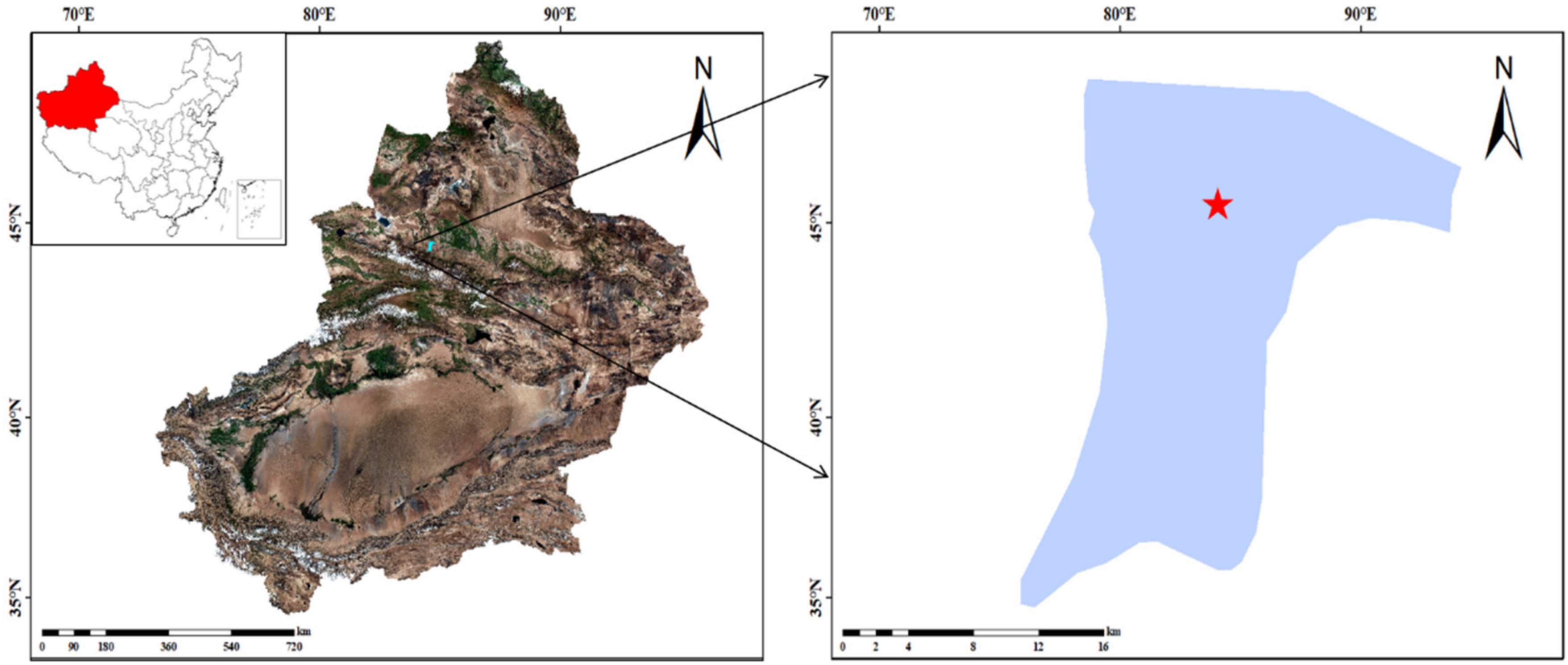

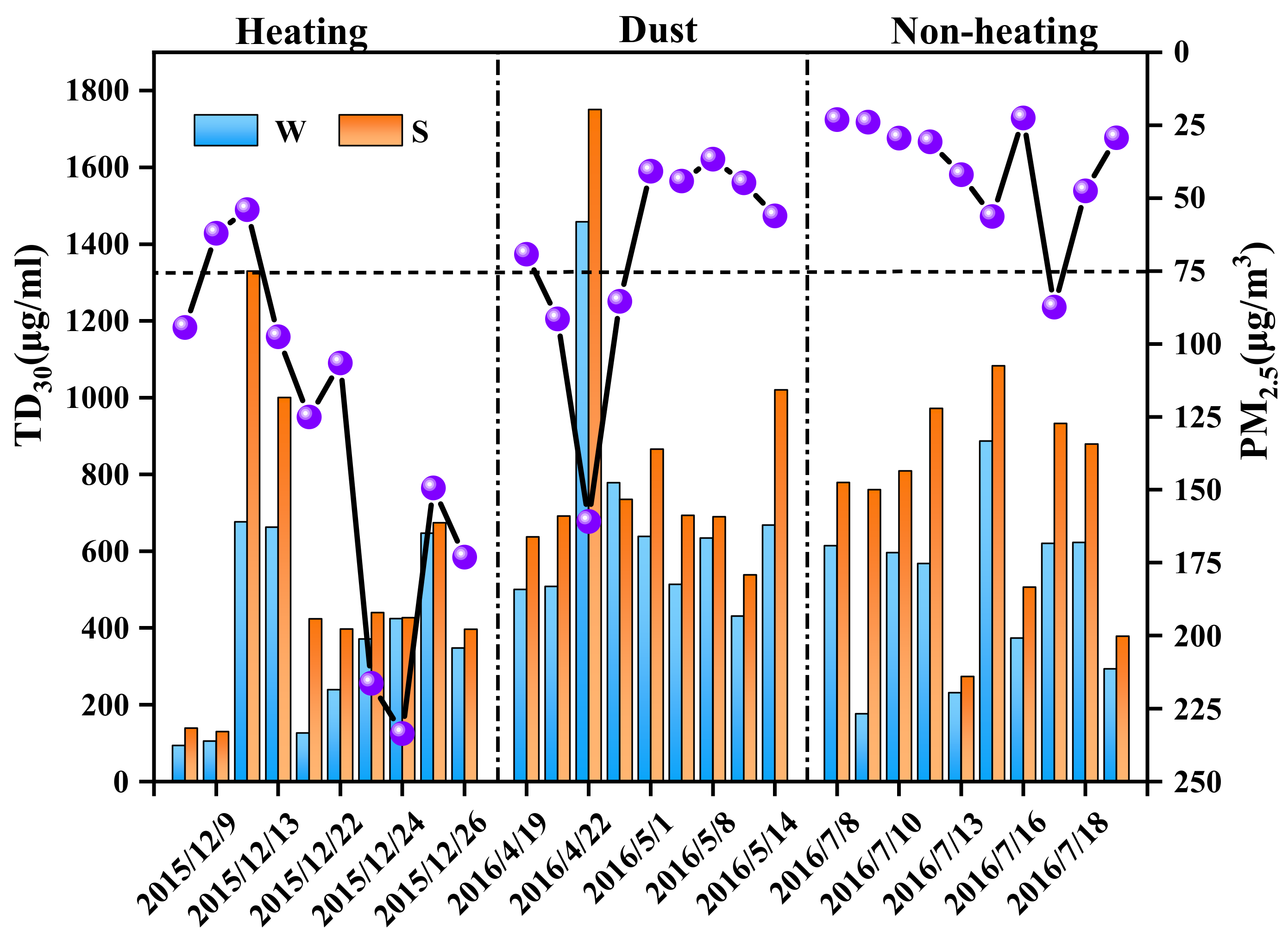
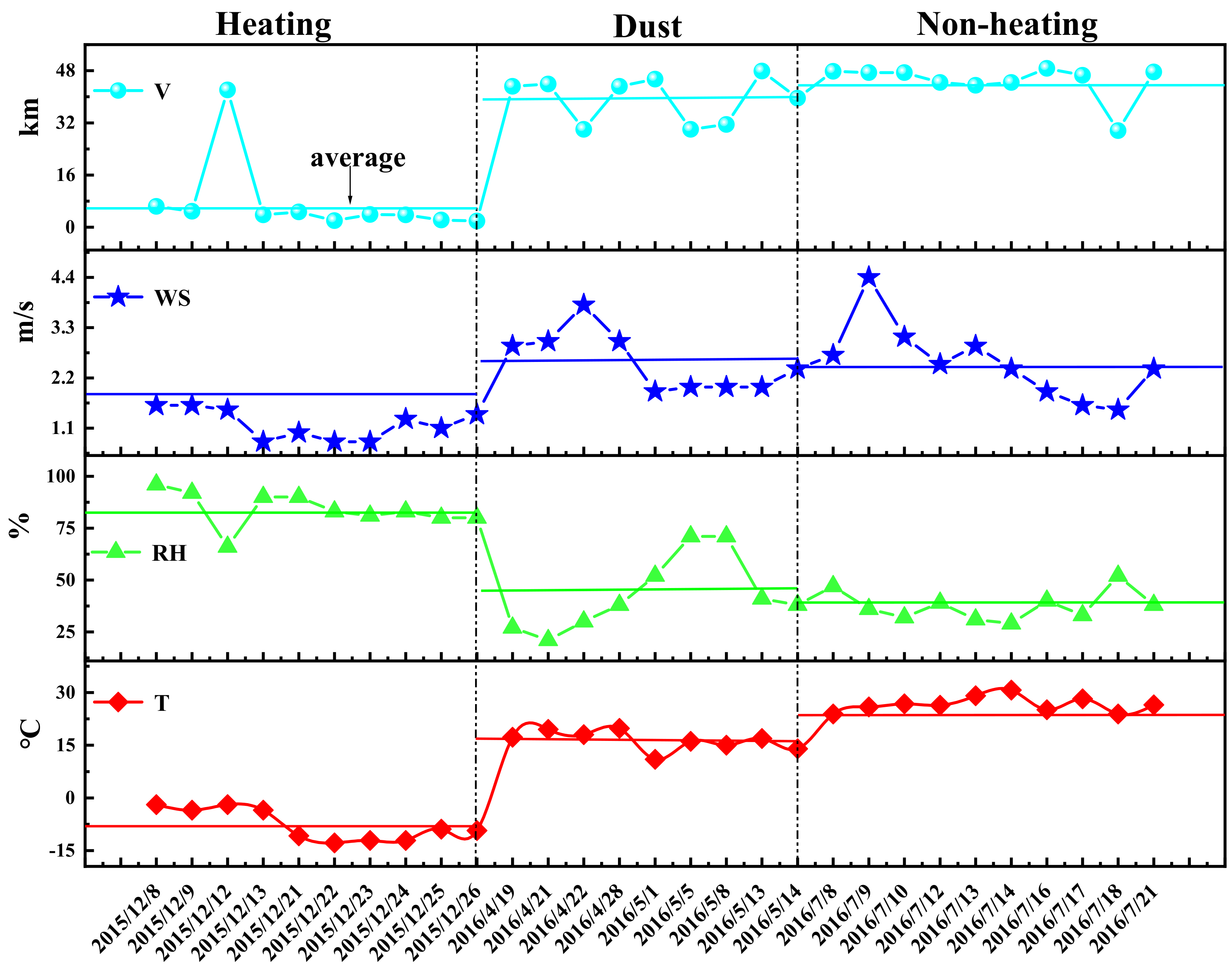
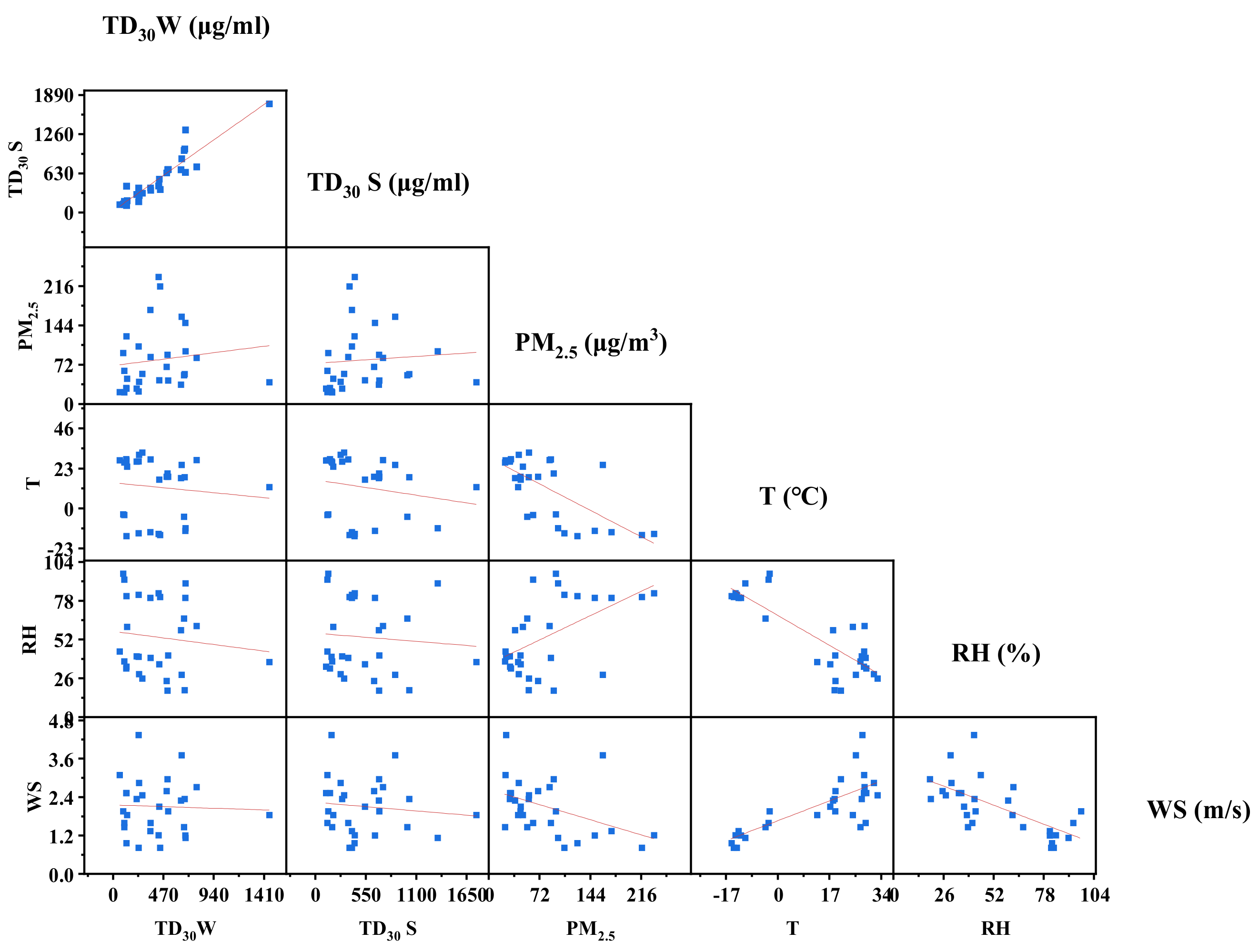

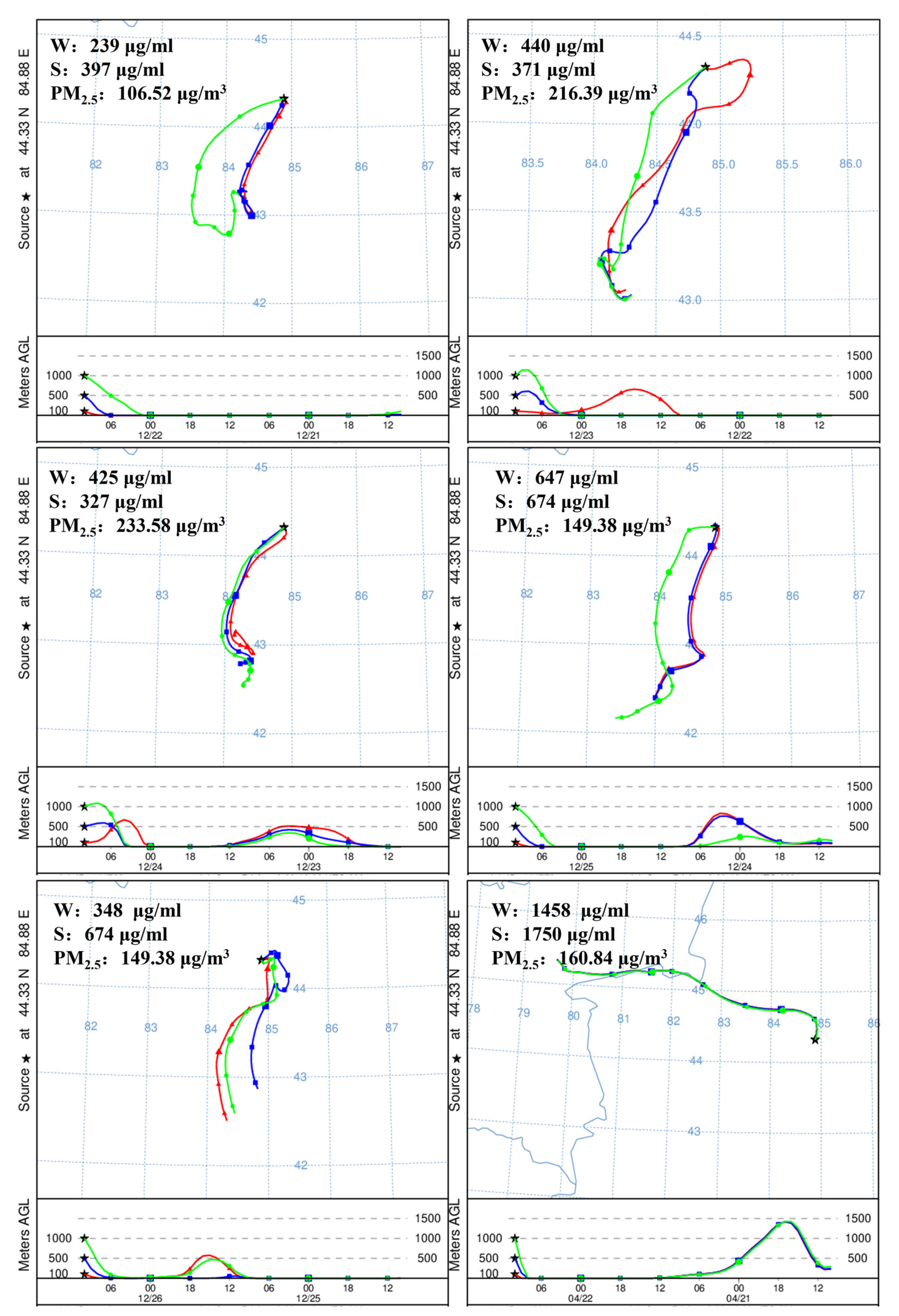
| Heating | Dust | Non-Heating | |||||
|---|---|---|---|---|---|---|---|
| Components | W | S | W | S | W | S | |
| Flu | −0.690 * | −0.668 * | −0.319 | −0.262 | −0.377 | −0.394 | |
| Phe | −0.619 | −0.723 * | 0.663 | 0.632 | −0.083 | −0.096 | |
| Ant | −0.538 | −0.494 | −0.203 | −0.158 | - a | - a | |
| ΣPAHs | Flt | −0.671 * | −0.760 * | −0.437 | −0.350 | −0.164 | −0.208 |
| Pyr | −0.727 ** | −0.768 ** | −0.501 | −0.443 | −0.194 | −0.237 | |
| BaA | −0.527 | −0.494 | - a | - a | −0.100 | −0.163 | |
| Chr | −0.464 | −0.556 | −0.481 | −0.537 | −0.216 | −0.254 | |
| BbF | −0.399 | −0.385 | −0.226 | −0.411 | −0.163 | −0.278 | |
| BkF | −0.465 | −0.468 | −0.301 | −0.412 | −0.078 | −0.203 | |
| BaP | −0.672 * | −0.725 * | - a | - a | −0.193 | −0.207 | |
| IcdP | −0.694 * | −0.740 * | −0.260 | −0.166 | 0.617 | 0.674 * | |
| DahA | −0.281 | −0.451 | - a | - a | - a | - a | |
| BghiP | −0.874 ** | −0.845 ** | - a | - a | 0.339 | 0.410 | |
| Li | −0.532 | −0.509 | 0.635 | 0.643 | 0.018 | −0.025 | |
| Be | −0.380 | −0.437 | 0.562 | 0.577 | −0.055 | −0.125 | |
| V | −0.379 | −0.271 | 0.586 | 0.552 | −0.015 | −0.094 | |
| Cr | 0.516 | 0.625 | 0.166 | 0.066 | −0.010 | −0.061 | |
| Mn | −0.359 | −0.361 | 0.597 | 0.536 | −0.080 | −0.163 | |
| Fe | −0.451 | −0.446 | 0.619 | 0.577 | 0.016 | −0.084 | |
| Heavy | Co | −0.411 | −0.281 | 0.631 | 0.584 | −0.035 | −0.099 |
| metal | Ni | −0.089 | 0.090 | −0.283 | −0.134 | 0.424 | 0.518 |
| Cu | −0.448 | −0.465 | 0.622 | 0.589 | 0.144 | 0.113 | |
| Zn | −0.404 | −0.429 | −0.264 | −0.254 | 0.565 | 0.527 | |
| Ga | −0.402 | −0.310 | 0.524 | 0.498 | 0.248 | 0.246 | |
| As | −0.480 | −0.626 | 0.792 * | 0.749 * | −0.014 | −0.099 | |
| Se | −0.736 * | −0.666 * | −0.081 | −0.182 | −0.205 | −0.402 | |
| Rb | −0.483 | −0.453 | 0.653 | 0.623 | 0.016 | −0.059 | |
| Sr | −0.351 | −0.168 | 0.776 * | 0.754 * | 0.068 | −0.010 | |
| Ag | −0.421 | −0.449 | 0.108 | −0.060 | −0.260 | −0.399 | |
| Cd | −0.246 | −0.454 | −0.460 | −0.402 | 0.417 | 0.349 | |
| Cs | −0.338 | −0.280 | 0.632 | 0.641 | 0.026 | −0.049 | |
| Ba | −0.381 | −0.165 | 0.529 | 0.507 | 0.322 | 0.350 | |
| TI | −0.219 | −0.179 | −0.211 | −0.397 | −0.191 | −0.226 | |
| Pb | −0.324 | −0.480 | 0.225 | 0.277 | 0.062 | −0.088 | |
Publisher’s Note: MDPI stays neutral with regard to jurisdictional claims in published maps and institutional affiliations. |
© 2021 by the authors. Licensee MDPI, Basel, Switzerland. This article is an open access article distributed under the terms and conditions of the Creative Commons Attribution (CC BY) license (https://creativecommons.org/licenses/by/4.0/).
Share and Cite
An, J.; Talifu, D.; Ding, X.; Shao, L.; Wang, X.; Abulizi, A.; Tursun, Y.; Liu, H.; Zhang, Y.; Aierken, T. Variation of Particle-Induced Oxidative Potential of PM2.5 in Xinjiang, NW-China. Atmosphere 2021, 12, 1028. https://doi.org/10.3390/atmos12081028
An J, Talifu D, Ding X, Shao L, Wang X, Abulizi A, Tursun Y, Liu H, Zhang Y, Aierken T. Variation of Particle-Induced Oxidative Potential of PM2.5 in Xinjiang, NW-China. Atmosphere. 2021; 12(8):1028. https://doi.org/10.3390/atmos12081028
Chicago/Turabian StyleAn, Juqin, Dilnurt Talifu, Xiang Ding, Longyi Shao, Xinming Wang, Abulikemu Abulizi, Yalkunjan Tursun, Huibin Liu, Yuanyu Zhang, and Turhun Aierken. 2021. "Variation of Particle-Induced Oxidative Potential of PM2.5 in Xinjiang, NW-China" Atmosphere 12, no. 8: 1028. https://doi.org/10.3390/atmos12081028
APA StyleAn, J., Talifu, D., Ding, X., Shao, L., Wang, X., Abulizi, A., Tursun, Y., Liu, H., Zhang, Y., & Aierken, T. (2021). Variation of Particle-Induced Oxidative Potential of PM2.5 in Xinjiang, NW-China. Atmosphere, 12(8), 1028. https://doi.org/10.3390/atmos12081028









